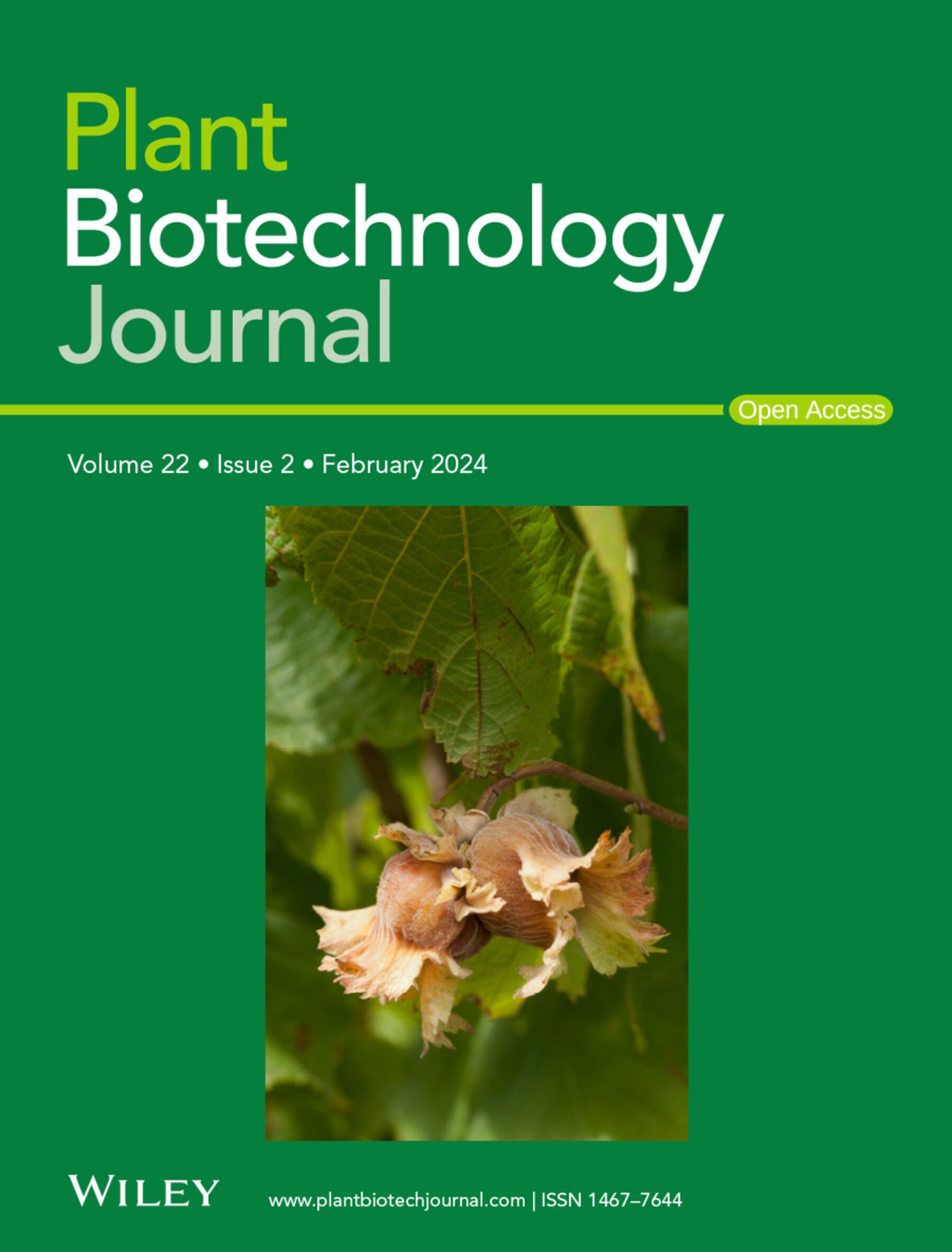Optimizing plant size for vertical farming by editing stem length regulators
IF 10.1
1区 生物学
Q1 BIOTECHNOLOGY & APPLIED MICROBIOLOGY
引用次数: 0
Abstract
Vertical farming offers the advantage of providing a stable environment for plant cultivation, shielding them from adverse conditions such as climate change. For fruit-harvesting plants like tomato, vertical farming necessitates the optimization of plant growth and architecture. The gibberellin 3-oxidase (GA3ox) genes encode gibberellin 3-oxidases responsible for activating GA within the pathway and modulating stem length. Among the five SlGA3ox genes, we targeted the coding regions of three SlGA3ox genes (named SlGA3ox3, SlGA3ox4 and SlGA3ox5) using multiplex CRISPR genome editing. The slga3ox4 single mutants exhibited a slight reduction in primary shoot length, leading to a smaller stature. In contrast, the slga3ox3 and slga3ox5 single mutants showed subtle phenotypic changes. Notably, the slga3ox3 slga3ox4 double mutants developed a more compact shoot architecture with minor physiological differences, potentially making them suitable for vertical farming applications. We observed a correlation between total yield and plant size across all genotypes through multiple yield trials. Observations from vertical farm cultivation revealed that slga3ox3 slga3ox4 plants possess a markedly compact plant size, offering potential benefits for space-efficient cultivation. Our research suggests that targeted manipulation of hormone biosynthetic genes can effectively tailor plant architecture for vertical farming.通过编辑茎长调节器来优化垂直农业的植株大小
垂直农业的优势在于为植物种植提供了一个稳定的环境,使它们免受气候变化等不利条件的影响。对于像番茄这样的水果收获植物,垂直农业需要优化植物的生长和结构。赤霉素3-氧化酶(gaox)基因编码赤霉素3-氧化酶,负责激活GA通路和调节茎长。在5个SlGA3ox基因中,我们利用多重CRISPR基因组编辑技术靶向了3个SlGA3ox3、SlGA3ox4和SlGA3ox5基因的编码区。slga3ox4单突变体初生枝长略有减少,导致植株矮小。相比之下,slga3ox3和slga3ox5单突变体表现出微妙的表型变化。值得注意的是,slga3ox3 slga3ox4双突变体的茎部结构更紧凑,生理差异较小,这可能使它们适合垂直农业应用。通过多次产量试验,我们观察到所有基因型的总产量与植株大小之间存在相关性。垂直农场栽培的观察结果显示,slga3ox3 slga3ox4植物具有明显紧凑的植株大小,为节省空间的栽培提供了潜在的好处。我们的研究表明,有针对性地操纵激素生物合成基因可以有效地定制垂直农业的植物结构。
本文章由计算机程序翻译,如有差异,请以英文原文为准。
求助全文
约1分钟内获得全文
求助全文
来源期刊

Plant Biotechnology Journal
生物-生物工程与应用微生物
CiteScore
20.50
自引率
2.90%
发文量
201
审稿时长
1 months
期刊介绍:
Plant Biotechnology Journal aspires to publish original research and insightful reviews of high impact, authored by prominent researchers in applied plant science. The journal places a special emphasis on molecular plant sciences and their practical applications through plant biotechnology. Our goal is to establish a platform for showcasing significant advances in the field, encompassing curiosity-driven studies with potential applications, strategic research in plant biotechnology, scientific analysis of crucial issues for the beneficial utilization of plant sciences, and assessments of the performance of plant biotechnology products in practical applications.
 求助内容:
求助内容: 应助结果提醒方式:
应助结果提醒方式:


